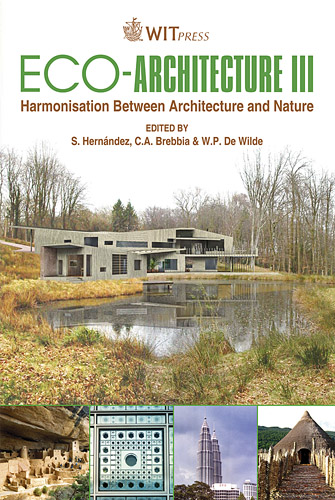V. Sforzini
Price
Free (open access)
Transaction
Volume
128
Pages
10
Page Range
551 - 560
Published
2010
Size
1,418 kb
Paper DOI
10.2495/ARC100471
Copyright
WIT Press
Author(s)
Department of Fisica Tecnica, Sapienza University of Rome, Italy
Abstract
Advanced technologies for sustainable building in the protected areas: two case studies in Italy F. Cinquepalmi, F. Cumo, F. Gugliermetti & V. Sforzini Department of Fisica Tecnica, Sapienza University of Rome, Italy Abstract For some years now the General Directorate for the Protection of Nature of the Italian Ministry for the Environment, Land and Sea, and the Department of \“Fisica Tecnica” of the \“Sapienza” University of Rome have been collaborating on issues such as sustainable development in protected areas and new technologies concerning innovative low-impact materials to be used in areas of particularly high environmental sensitivity. The first case study presented for the Protected Areas deals with a pilot project in a suburban green area jointly individuated with the \“Assessorato all’Ambiente” of the Municipality of Rome designed to evaluate low-impact building in contexts of environmental \“Excellency”, such as parkland in urban areas, city outskirts, green areas and national parks. In line with the Strategic Environmental Evaluation, the reversibility of such buildings has been evaluated with particular care, although other considerations, such as aspects related to the education towards sustainability in architecture, were also looked into. Research has been oriented towards pinpointing ‘new’ envelope technologies in which to assembly components and technical solutions already known as \“sustainable” and/or \“energy efficient” (such as coat insulation, roof garden, ecologically compatible materials such as wood, etc.), but whose combined application has not yet been tested as a whole complex system. During the realization of this 500mq eco-sustainable structures the following technologies have been included: wooden structures and sheathing for a low energy consumption and naturally recyclable material; green roof coverings; systems for water cycle management; solar collectors for hot water production and photovoltaic systems; high performance glass in terms of light transmission, solar control and thermal insulation.
Keywords
sustainable, integrated, green energy, solar energy, energy efficiency, sustainable technologies, natural elements, climatic resource, saving CO2





